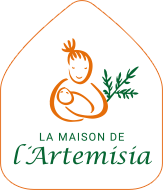FAQ

Cultivation
Yes. Artemisia leaves and stems can be dried in full sun and make an effective herbal tea. See File 13 Drying in the Cultivation & Processing Manual
In France, on kokopelli-semences.fr.
In Africa, contact your nearest House of Artemisia. In accordance with WHO recommendations for the supervision of herbal medicine, seeds and/or small plants are given in the Houses of Artemisia upon completion of training in Artemisia cultivation. Currently, they are not yet available in large quantities. The Houses of Artemisia may possibly sell you seeds, accompanied by up-to-date agronomic and medical recommendations.
In Africa, contact your nearest House of Artemisia. In accordance with WHO recommendations for the supervision of herbal medicine, seeds and/or small plants are given in the Houses of Artemisia upon completion of training in Artemisia cultivation. Currently, they are not yet available in large quantities. The Houses of Artemisia may possibly sell you seeds, accompanied by up-to-date agronomic and medical recommendations.
Artemisia afra is a perennial and not an annual plant.
It is therefore much easier to cultivate and requires much less labour as the delicate sowing process does not need to be renewed every year ! However, it is more difficult to obtain Artemisia afra seeds. Propagation is therefore done using cuttings and layering. It has the same therapeutic properties as Artemisia annua against bilharzia and malaria. In addition, it also treats tuberculosis and has biological action on Buruli ulcer.
All this without containing artemisinin!
Legally, Artemisia afra is already part of the traditional African pharmacopoeia and can therefore be sold as a medicinal plant throughout East Africa. For Artemisia annua, registration with the national herbarium is still required.
It is therefore much easier to cultivate and requires much less labour as the delicate sowing process does not need to be renewed every year ! However, it is more difficult to obtain Artemisia afra seeds. Propagation is therefore done using cuttings and layering. It has the same therapeutic properties as Artemisia annua against bilharzia and malaria. In addition, it also treats tuberculosis and has biological action on Buruli ulcer.
All this without containing artemisinin!
Legally, Artemisia afra is already part of the traditional African pharmacopoeia and can therefore be sold as a medicinal plant throughout East Africa. For Artemisia annua, registration with the national herbarium is still required.
Therapeutic use
Artemisia annua has been used in Traditional Medicine for thousands of years but has still not been the subject of the numerous studies required by Western medicine to be able to write that it cures. However, it is well known that Artemisia annua has biological action on numerous parasitic pathologies (malaria, bilharzia (schistosomiasis), leshmaniasis, filariasis, trypanosomiasis, Chagas disease, babesiosis), and viral, bacterial, fungal and cancerous diseases. It has immuno-regulatory, anti-inflammatory, anti-osteoporosis and anti-adipogenic actions.
Clinical trials have shown that it treats uncomplicated malaria and schistosomiasis. See:
X. Feng, S. Cao, F. Qiu, et al., Traditional application and modern pharmacological research of Artemisia annua L., Pharmacology & Therapeutics, https://doi.org/10.1016/j.pharmthera.2020.107650
Clinical trials have shown that it treats uncomplicated malaria and schistosomiasis. See:
X. Feng, S. Cao, F. Qiu, et al., Traditional application and modern pharmacological research of Artemisia annua L., Pharmacology & Therapeutics, https://doi.org/10.1016/j.pharmthera.2020.107650
Artemisia annua appears to have a biological action according to several renowned research teams around the world.
Artemisia annua, possible treatment against Covid-19 : Status report on research
Bibliography
Artemisia annua, possible treatment against Covid-19 : Status report on research
Bibliography
We do not know.
Some scientific articles mention a biological effect of Artemisia annua on Lyme disease and tick-borne diseases.
Article in Frontiers in Medicine.
Antibiotics 2015
Article in Frontiers in Medicine.
Antibiotics 2015
Some scientific articles mention a biological effect of Artemisia annua on certain cancers: Ref. Further studies are in progress.
Reference : X. Feng, S. Cao, F. Qiu, y otros, Aplicación tradicional e investigación farmacológica moderna de la Artemisia annua L., Farmacología y Terapéutica.
Reference : X. Feng, S. Cao, F. Qiu, y otros, Aplicación tradicional e investigación farmacológica moderna de la Artemisia annua L., Farmacología y Terapéutica.
Artemisia afra has a biological action on malaria and bilharziasis (schistosomiasis). It has a biological action on respiratory diseases including tuberculosis, Buruli ulcer, diabetes and some cancers. See "Artemisia afra and Modern Diseases" Journal of Pharmacogenomics & Pharmacoproteomics
The situation changes from country to country.
In Africa, in the Houses of Artemisia network [see map].
Sale is not authorised in France and most European countries.
Help us by signing the petition to request the registration of Artemisia annua in the European Pharmacopoeia
In Africa, in the Houses of Artemisia network [see map].
Sale is not authorised in France and most European countries.
Help us by signing the petition to request the registration of Artemisia annua in the European Pharmacopoeia
The dosage according to Traditional Chinese Medicine is presented here. It has been used in most scientific studies.
The plant is not toxic. It is classified in the United States in the plant category Generally Recognized As Safe. As a precaution, avoid during the first trimester of pregnancy.
This is contradicted by the historical use of the plant by the Chinese for centuries without any resistance being observed.
1 - It is much more difficult for mosquitoes to develop resistance to a polytherapy rather than to an isolated molecule.
2 - Artemisia afra, which does not contain artemisinin, has shown the same efficacy as Artemisia annua. Studies are in progress.
1 - It is much more difficult for mosquitoes to develop resistance to a polytherapy rather than to an isolated molecule.
2 - Artemisia afra, which does not contain artemisinin, has shown the same efficacy as Artemisia annua. Studies are in progress.
Like all plants, Artemisia annua and afra each contain several hundred molecules. About twenty molecules active against malaria have been identified. These probably work in synergy on the parasites at their different stages of evolution. Artemisia annua contains, among others, artemisinin, a beta-hemozoin inhibitor; Artemisia afra does not. Both are effective against malaria and bilharzia.
Pamela Weathers' work shows that the bioavailability of artemisinin is at least 10 times greater when consumed in herbal tea than as a drug. This is due to the other molecules of the plant contained in the herbal tea. Cf. active ingredients

Derived products
There are hardly any studies carried out with mother tinctures or hydroalcoholic extracts of Artemisia.
They help to treat skin conditions with antiseptic and healing properties. Journal of Cosmetics, Dermatological Sciences and Applications, doi.org/10.4236/jcdsa.2020.101002
Association
It is possible to make a donation to La Maison de l'Artemisia head office located in France. It helps the local Houses of Artemisia to get started and ensures their follow-up. It is committed to distributing donations fairly according to the needs of each centre. Donate here.
According to French tax law, payments, contributions and donations to charitable organisations and foundations can be deducted from taxable income (Individual donors : 66% of donation, up to a maximum of 20% of taxable income. Corporate donors : 60% of donations, up to a maximum of 0.5% of annual turnover).
75% of the donation is deductible from IFI wealth tax, up to a maximum of €50 000.










